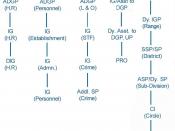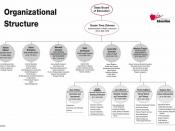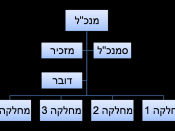Evolution of Formal OrganizationsThis paper is based on the simple idea that formal organizations with conventional, bureaucratic organizational structure may benefit by adopting a more flexible organizational structure. Areas to be explored are the evolution of formal organizations over the past century, differences between formal and informal organizations, trends in formal organizations; characteristics needed for formal organizations to evolve and researched material on the trends in formal organizations.
Formal organizations have been steadily evolving over the past century. A significant change in the structure of formal organizations has transformed the traditional value system of organizations into a more modern organizational system. With the integration of modern flexible organizational structureformal organizations have become more profitable, employees earn higher wages and consumers reap the rewards of lower priced products. Examining the differences in organizations a century ago, compared to today's organizations will show the significance of these changes.
Formal organizations were set up century's ago. Early empires were governed by the privileged who implemented chain of command procedures and inflexible policies. Organizations were traditional and conservative with values and beliefs that were carried down from generation to generation. Chain of command consisted of the CEO, top executives, division leaders, middle managers, and rank-and-file workers. Each position within the rank structure was distinct and specialized with clearly defined rules and regulations governing all personnel within the organization. Groups were organized to achieve specific goals with the highest efficiency. Efficiency was believed to be achieved through careful selection during the hiring process. Each group had specialized professions from supervisors to file workers and all positions were based on technical competence. Positions were also based on patterns of privilege and exclusion i.e. women and minorities were excluded from higher ranking positions. Communications were typically formal and in writing rather...


